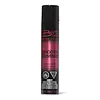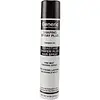What's inside
What's inside
 Key Ingredients
Key Ingredients

No key ingredients
 Benefits
Benefits

No benefits
 Concerns
Concerns

 Ingredients Side-by-side
Ingredients Side-by-side

Sd Alcohol 40-B
AstringentHydrofluorocarbon 152a
Butyl Ester Of Pvm/Ma Copolymer
Octylacrylamide/Acrylates/Butylaminoethyl Methacrylate Copolymer
Aminomethyl Propanol
BufferingParfum
MaskingGlycerin
HumectantLinoleamidopropyl Ethyldimonium Ethosulfate
Water
Skin ConditioningCyclopentasiloxane
EmollientTetrahydroxypropyl Ethylenediamine
Panthenol
Skin ConditioningPEG-75 Lanolin
EmollientLinalool
PerfumingHydroxycitronellal
PerfumingSodium PCA
HumectantBenzyl Salicylate
PerfumingAmyl Cinnamal
PerfumingDimethyl Lauramine Isostearate
EmollientHexyl Cinnamal
PerfumingPropylene Glycol
HumectantGeraniol
PerfumingEthylhexyl Methoxycinnamate
UV AbsorberCitronellol
PerfumingAlpha-Isomethyl Ionone
PerfumingLimonene
PerfumingPPG-12 Dimethicone
Skin ConditioningTocopherol
AntioxidantBHT
AntioxidantSd Alcohol 40-B, Hydrofluorocarbon 152a, Butyl Ester Of Pvm/Ma Copolymer, Octylacrylamide/Acrylates/Butylaminoethyl Methacrylate Copolymer, Aminomethyl Propanol, Parfum, Glycerin, Linoleamidopropyl Ethyldimonium Ethosulfate, Water, Cyclopentasiloxane, Tetrahydroxypropyl Ethylenediamine, Panthenol, PEG-75 Lanolin, Linalool, Hydroxycitronellal, Sodium PCA, Benzyl Salicylate, Amyl Cinnamal, Dimethyl Lauramine Isostearate, Hexyl Cinnamal, Propylene Glycol, Geraniol, Ethylhexyl Methoxycinnamate, Citronellol, Alpha-Isomethyl Ionone, Limonene, PPG-12 Dimethicone, Tocopherol, BHT
Ingredients Explained
These ingredients are found in both products.
Ingredients higher up in an ingredient list are typically present in a larger amount.
Hexyl Cinnamal is a fragrance ingredient with a similar scent to jasmine. It can be naturally found in chamomile essential oil.
This ingredient is a known EU allergen and may sensitize the skin. The EU requires this ingredient to be listed separately on an ingredients list.
Hexyl Cinnamal is not water soluble but is soluble in oils.
Learn more about Hexyl CinnamalWe don't have a description for Hydrofluorocarbon 152a yet.
Limonene is a fragrance that adds scent and taste to a formulation.
It's found in the peel oil of citrus fruits and other plants such as lavender and eucalyptus. The scent of limonene is generally described as "sweet citrus".
Limonene acts as an antioxidant, meaning it helps neutralize free radicals.
When exposed to air, oxidized limonene may sensitize the skin. Because of this, limonene is often avoided by people with sensitive skin.
The term 'fragrance' is not regulated in many countries. In many cases, it is up to the brand to define this term. For instance, many brands choose to label themselves as "fragrance-free" because they are not using synthetic fragrances. However, their products may still contain ingredients such as essential oils that are considered a fragrance.
Learn more about LimoneneParfum is a catch-all term for an ingredient or more that is used to give a scent to products.
Also called "fragrance", this ingredient can be a blend of hundreds of chemicals or plant oils. This means every product with "fragrance" or "parfum" in the ingredients list is a different mixture.
For instance, Habanolide is a proprietary trade name for a specific aroma chemical. When used as a fragrance ingredient in cosmetics, most aroma chemicals fall under the broad labeling category of “FRAGRANCE” or “PARFUM” according to EU and US regulations.
The term 'parfum' or 'fragrance' is not regulated in many countries. In many cases, it is up to the brand to define this term.
For instance, many brands choose to label themselves as "fragrance-free" because they are not using synthetic fragrances. However, their products may still contain ingredients such as essential oils that are considered a fragrance by INCI standards.
One example is Calendula flower extract. Calendula is an essential oil that still imparts a scent or 'fragrance'.
Depending on the blend, the ingredients in the mixture can cause allergies and sensitivities on the skin. Some ingredients that are known EU allergens include linalool and citronellol.
Parfum can also be used to mask or cover an unpleasant scent.
The bottom line is: not all fragrances/parfum/ingredients are created equally. If you are worried about fragrances, we recommend taking a closer look at an ingredient. And of course, we always recommend speaking with a professional.
Learn more about ParfumSD Alcohol 40-B is created by denaturing ethanol with tert-Butyl alcohol and denatonium benzoate. It is a solvent and astringent.
The 'SD' stands for 'specially denatured'. Denatured alcohol means the structure has been altered.
The 40-B is given by the U.S. Bureau of Alcohol, Tobacco, and Firearms. This is in accordance to the method of how the alcohol was denatured.
This ingredient is a solvent alcohol.
Learn more about Sd Alcohol 40-BWater. It's the most common cosmetic ingredient of all. You'll usually see it at the top of ingredient lists, meaning that it makes up the largest part of the product.
So why is it so popular? Water most often acts as a solvent - this means that it helps dissolve other ingredients into the formulation.
You'll also recognize water as that liquid we all need to stay alive. If you see this, drink a glass of water. Stay hydrated!
Learn more about Water